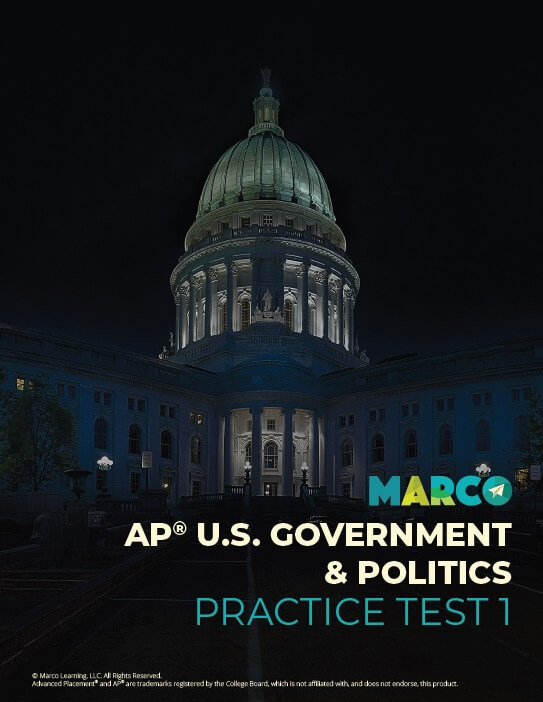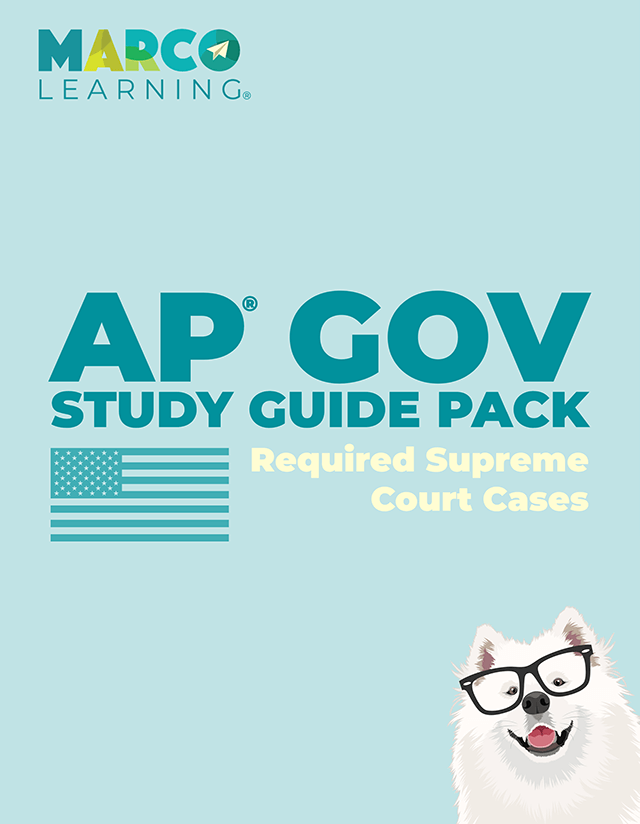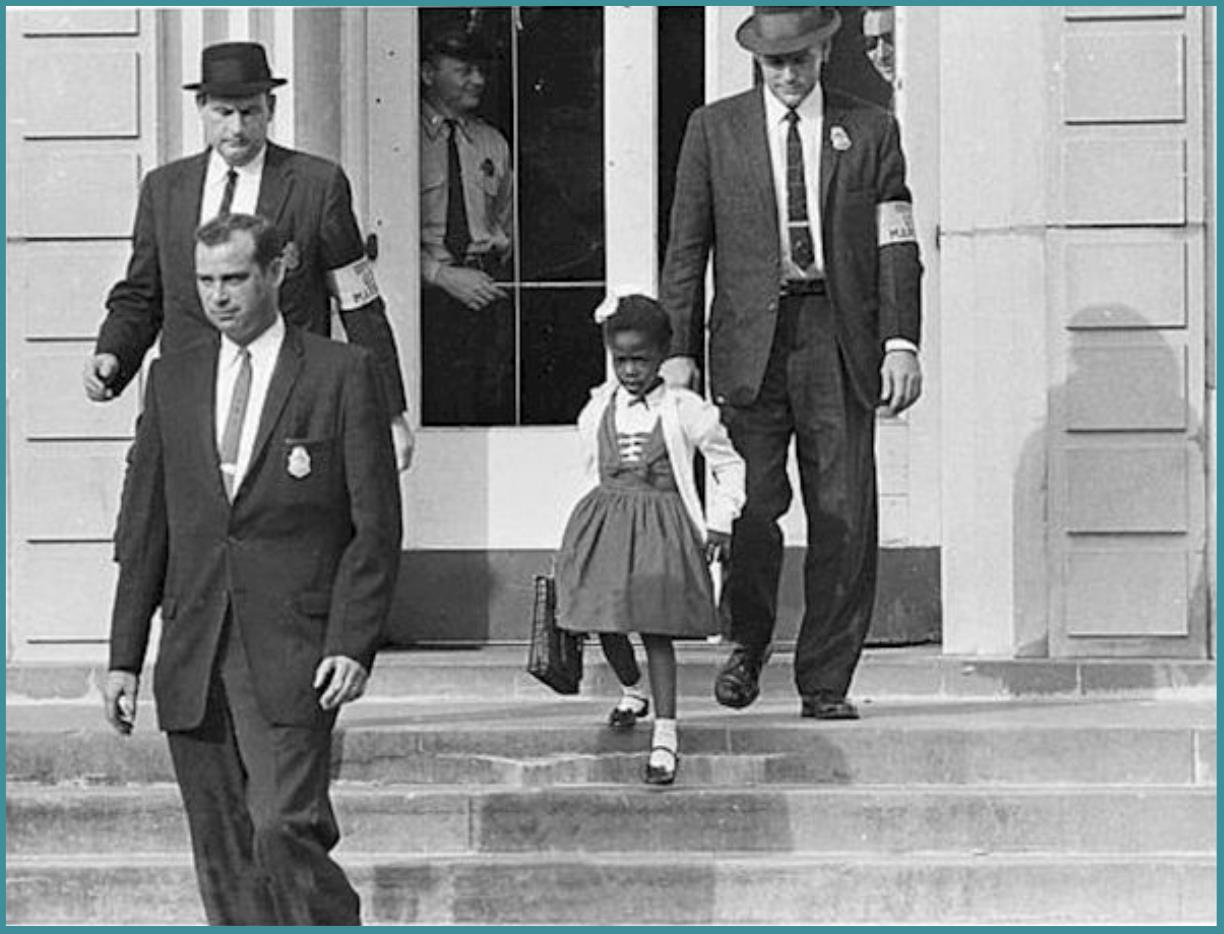


To score well on your AP® U.S. Government and Politics Exam, it is important to become familiar with all of the required Supreme Court cases. In the free-response section of your AP U.S. Government Exam, you will have to answer four essay questions. The third of these questions is a SCOTUS comparison essay, in which you will be required to compare a non-required Supreme Court case with a required Supreme Court case, so get to know each required Supreme Court case as well as possible!
The required Supreme Court cases for the AP U.S. Government and Politics Exam in 2021 are:
Marbury v. Madison (1803)
McCulloch v. Maryland (1819)
Schenck v. the United States (1919)
Brown v. Board of Education (1954)
Engel v. Vitale (1962)
Baker v. Carr (1962)
Gideon v. Wainwright (1963)
Tinker v. Des Moines Independent Community School District (1969)
New York Times Co. v. United States (1971)
Wisconsin v. Yoder (1972)
Roe v. Wade (1973)
Shaw v. Reno (1993)
United States v. Lopez (1995)
McDonald v. Chicago (2010)
Citizens United v. Federal Election Commission (2010)
Brown v. Board (1954)
Brown v. Board is one of the required Supreme Court cases for AP U.S. Government and Politics. This case resulted in the landmark decision that established that racial segregation in public schools was unconstitutional.
Tom Richey delves deeper into the facts of the case in this video:
FACTS OF THE CASE
In 1951, Oliver Brown attempted to enroll his daughter at the public elementary school closest to their home. The school refused to accept his daughter’s enrollment because she was African American, forcing her to take a bus to a segregated black elementary school that was significantly further away. The Browns joined with twelve other local families and filed a class-action lawsuit against the Topeka Board of Education, arguing that racial segregation in public schools violated the Fourteenth Amendment. A lower court initially ruled against the Browns, arguing that racial segregation was allowed under the 1896 Plessy v. Ferguson ruling that allowed “separate but equal” facilities. The National Association for the Advance of Colored People (NAACP) supplied lawyers to the families to appeal the case up the Supreme Court. Thurgood Marshall, who would later be appointed as a Supreme Court justice, argued on behalf of the plaintiffs.
THE DECISION
By a unanimous decision, the Court ruled that that “separate educational facilities are inherently unequal” because racial segregation had a negative effect on the minority group. The ruling overturned Plessy v. Ferguson by arguing that separation was harmful, even if the “tangible qualities” of the situations were the same.
IMPACT
Although the ruling was a major victory of the Civil Rights Movement, it was resisted by local governments across the south. Politicians in the deep south implemented a program dubbed “Massive Resistance” to do whatever necessary to stop school integration. The federal government sent in the National Guard to integrate schools in Alabama and Arkansas. In other districts in the south, segregation was implemented after numerous subsequent lawsuits.

PRECEDENT
Plessy v. Ferguson (1896)—argued that public facilities could be racially separated as long as the facilities available to African Americans and Caucasians were “separate, but equal.”
SUBSEQUENT CASE
Cooper v. Aaron (1958)—the Warren Court continued to assert federal responsibility for civil rights by denying states the right to delay desegregation by upholding the judicial supremacy precedent established in Marbury v. Madison (1803).
KEY TERMS
Segregation In the aftermath of the Civil War, African Americans and Caucasians were socially separated throughout the United States through overlapping systems of de facto segregation and de jure segregation like the Jim Crow laws in the south.
Equal Protection Clause The Equal Protection Clause of the Fourteenth Amendment argues that states do not have the power to “deny to any person within its jurisdiction the equal protection of the laws” that is granted to them by the federal government.
The best way to get better at something is by practicing.
That’s why it’s so important that you take practice tests to help you get better at the AP U.S. Government and Politics Exam. Only then can you expect to get a good score—and even improve your score.
 Help
Help